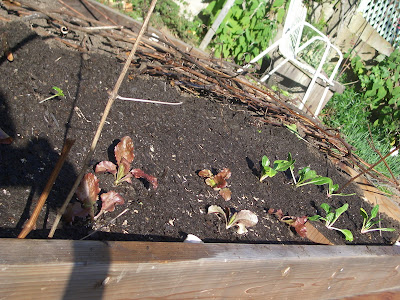
When was the last time you were at a party with friends reading poetry to each other? Last night my husband and I attended our first Burns supper, an event celebrated on or around January 25, the birth date of the Scottish poet Robert Burns. The highlight of these gatherings, after a meal of traditional Scottish foods (more on that later) , is the singing and reading of poetry by Burns and other poets. The celebrants gathered by our Scottish friends Colin and Caroline were not necessarily highly practiced at either declaiming poetry or singing, but we all joined in gladly to celebrate the spirit of Burns. Some people brought a poem thoughtfully selected in advance in honor of the host, the hostess, or a favorite theme. There were poems by Pablo Neruda, in English and Spanish, and Maya Angelou; an Australian poem; even a poem in Irish Gaelic. Some were silly, some earnest, some heartfelt, some a parody. But it was poetry, and we even sang, quaveringly, “A Red, Red Rose.” I loved hearing the different voices read, in accents Scottish, Irish, Australian, American. Why does a particular poem appeal to a person, like the poem my friend Barbara read, an older woman’s reflection on her love for a soldier laddie? Here is the poem I selected to read, written by Burns to his wife, Jean, during a separation in 1788. It spoke to me of that exquisite heightened sensitivity of separation, when everything reminds you of your love:
Of A’ the Airts
Of a' the airts the wind can blaw,
I dearly like the west,
For there the bonie lassie lives,
The lassie I lo'e best:
There's wild-woods grow, and rivers row,
And mony a hill between:
But day and night my fancys' flight
Is ever wi' my Jean.
I see her in the dewy flowers,
I see her sweet and fair:
I hear her in the tunefu' birds,
I hear her charm the air:
There's not a bonie flower that springs,
By fountain, shaw, or green;
There's not a bonie bird that sings,
But minds me o' my Jean.
Of the traditional Scottish meal: it began with bowls of rustic Scotch Broth, ladled from a tureen. Caroline’s Scotch Broth was thick and hearty, filled with potato, beans, and vegetables. I have also seen it as a more refined clear broth with a scattering of barley and beef and vegetables. This was only a prelude to the dish of honor, haggis. Many--especially those of us of British Isles descent--are steeped in lore of the haggis, although I wager few of us have actually tasted it. This is no longer a dish one makes at home. Caroline and Colin wrangled one from a maker in New Hampshire, since their usual California haggis purveyor said they had run out, and then managed to conjure one up in the last minute. Along with the vegetarian haggis, that made a total of three. I learned that before the haggis is served at a Burns supper, it must be addressed by the man of the house with a recitation of Burns’ “Address To a Haggis.” Here are the first three stanzas (it goes on a while longer, as all the hungry guests are gazing at the steaming treat):
Fair fa' your honest, sonsie face,
Great chieftain o' the pudding-race!
Aboon them a' yet tak your place,
Painch, tripe, or thairm:
Weel are ye wordy o'a grace
As lang's my arm.
The groaning trencher there ye fill,
Your hurdies like a distant hill,
Your pin was help to mend a mill
In time o'need,
While thro' your pores the dews distil
Like amber bead.
His knife see rustic Labour dight,
An' cut you up wi' ready sleight,
Trenching your gushing entrails bright,
Like ony ditch;
And then, O what a glorious sight,
Warm-reekin', rich!
The haggis’s (haggi?) last night were not as "lang" as anyone's arm, but plump, football-sized sausages with their ends tied saucily upward. During the recitation of the third stanza above, the host (in our case the host’s son) plunges the knife into the haggis to let the juices flow. Then everyone can dig in, and add mashed potatoes and bashed neeps (turnips) to their plates. I can say that a little haggis goes a long way. Haggis is made of lamb liver, sheep’s heart, onion, steel-cut oats, beef suet, and a dash of whiskey ground up and stuffed in a sheep’s intestine. For dessert was Atholl Brose, a mixture of whipped cream, toasted oats and nuts, honey, and whiskey. Not exactly California cuisine.

Oh—about one more Scottish cliché: kilts. I questioned one kilt-wearing man and found out that the one he was wearing had been his father’s army kilt, worn as a dress uniform. The kilt’s waist is adjustable, so you can wear it for a lifetime, or—as in this man’s case—longer. It is supposed to contain 30 yards of fabric. Another man wore a “Utilikilt,” invented by a company in Seattle, that combines the style and freedom of movement of a kilt with the practicality of khaki and cargo pockets. I have to say the kilt-wearing men last night looked quite manly and dashing.












